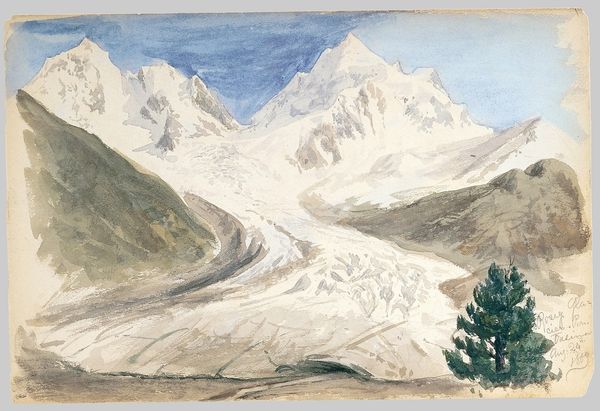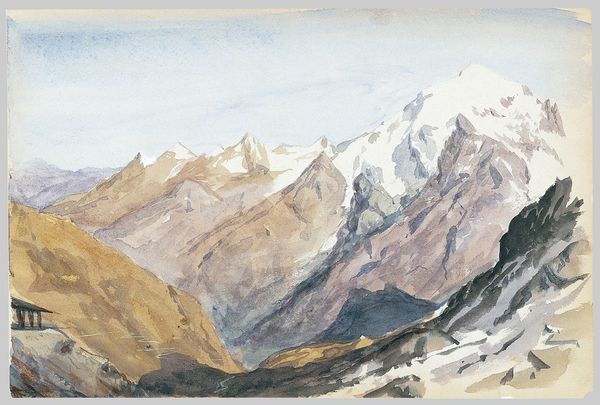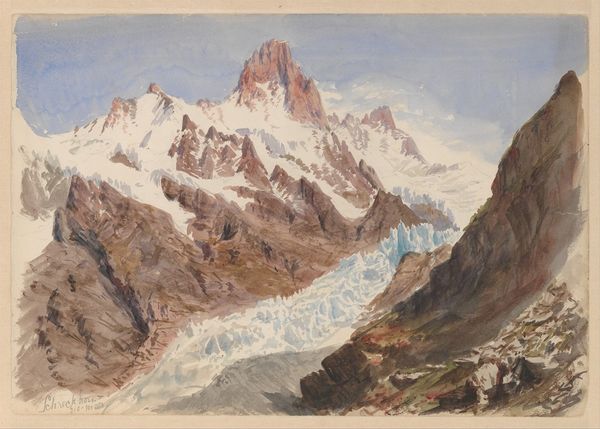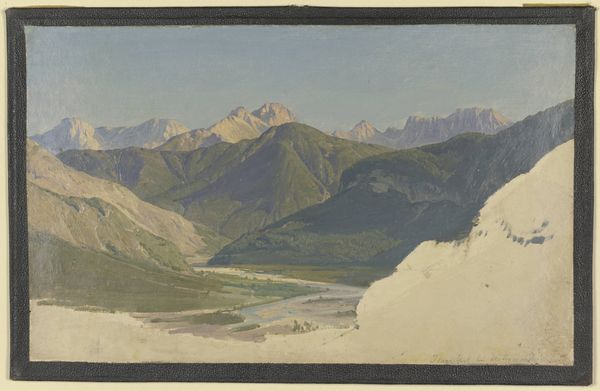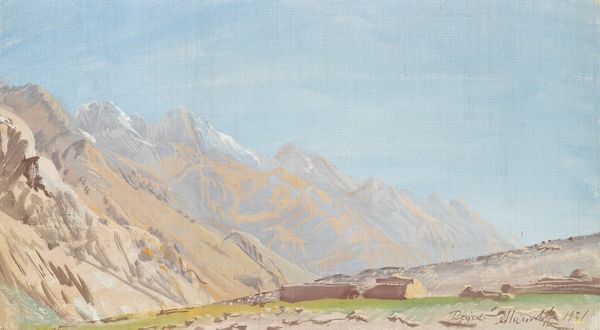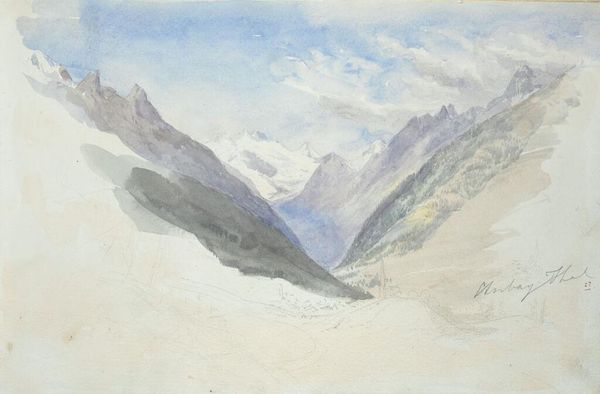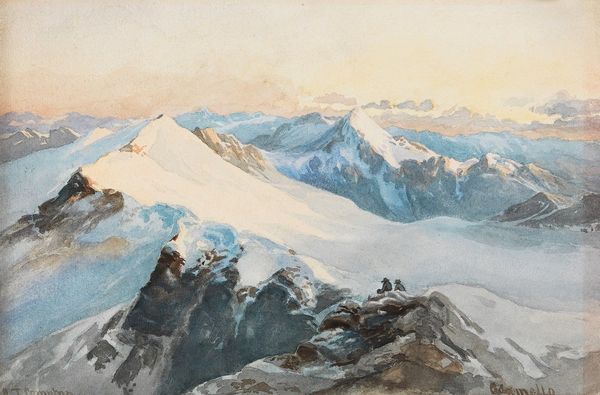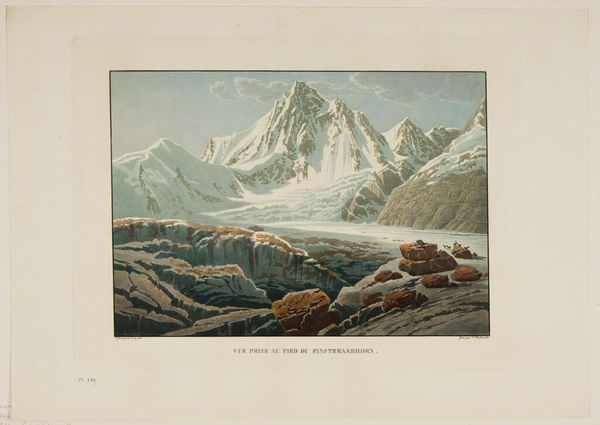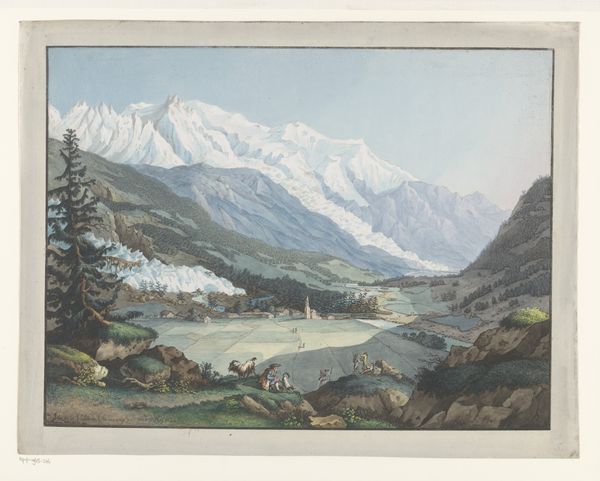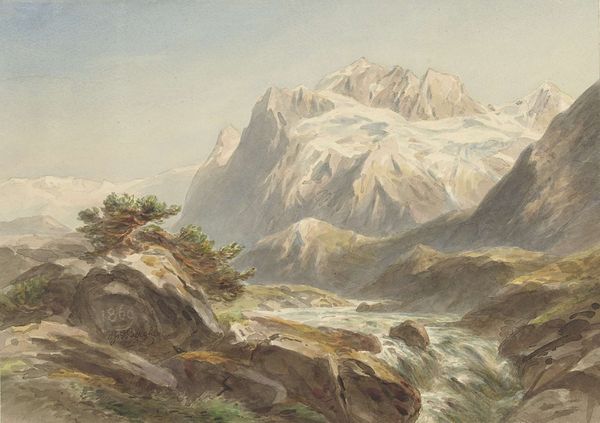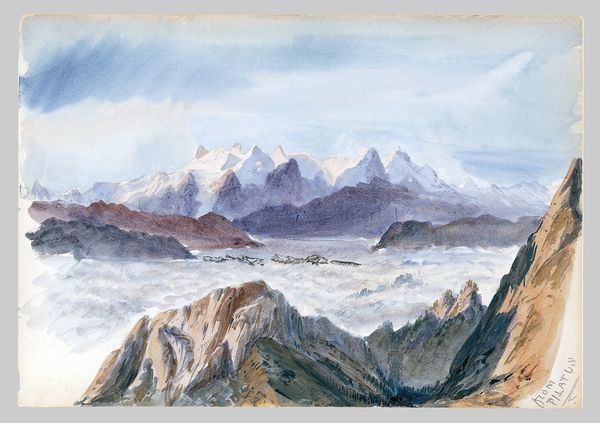
View of the Massif of Mont Blanc near the "Petit Jorasse, Grand Jorasse, le Géant" with the "Glaciers des Périades et Jorasse" and the "Glacier de la Venval" as seen from the "Col de Fenêtre près du Gd. St. Bernard" 1766 - 1899
0:00
0:00
drawing, print, plein-air, oil-paint, watercolor
#
drawing
# print
#
plein-air
#
oil-paint
#
landscape
#
oil painting
#
watercolor
#
romanticism
#
mountain
#
watercolour illustration
#
watercolor
#
realism
Dimensions: sheet: 16 15/16 x 22 1/16 in. (43 x 56 cm)
Copyright: Public Domain
Jean-Antoine Linck captured the imposing "View of the Massif of Mont Blanc" in watercolor. The mountain, often a symbol of challenge and purity, stands as a stoic figure. Note the figure of the hunter, juxtaposed with the mountain goats, or ibex. Historically, the ibex is an ancient symbol, often associated with the wild, untamed aspects of nature. We see echoes of this imagery in ancient Near Eastern art, where goats appear in heraldic poses, flanking the Tree of Life. Such imagery is not merely decorative. The goat embodies the life force, connecting humans with the raw vitality of the natural world. Consider the hunter, too. He represents human ambition and dominance, a counterpoint to the ibex’s natural freedom. The tension between man and nature engages us on a subconscious level. The symbolism persists, reminding us of our primal connection to the world, and of the power inherent in both its beauty and its challenges.
Comments
No comments
Be the first to comment and join the conversation on the ultimate creative platform.
